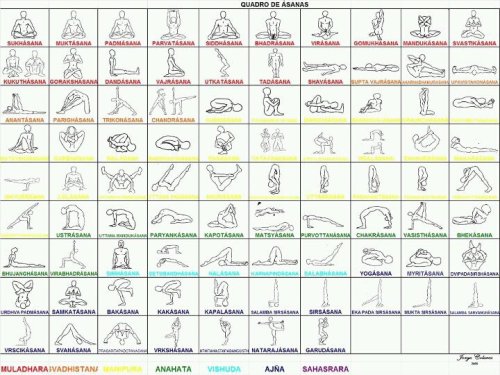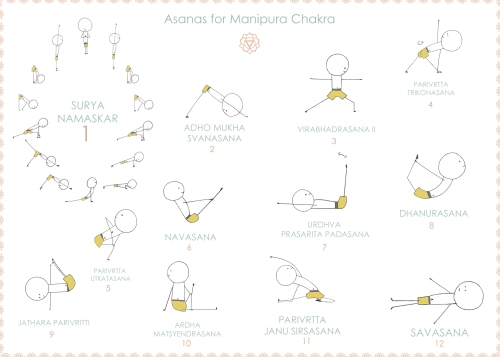Well....what about other sounds, like letters you say?
Take that information and combine it with the fact that color is visible light at varying frequencies.
So colors also have frequencies.
Well, did you know some people see colors associated with certain sounds or letters? Or even people feeling those frequencies/colors with their eyes closed? It may sounds strange, but I've personally met a woman who has a highly developed sense of feeling color. We are so used to seeing and feeling our world in certain ways, but what other possibilities are there with developing our senses and spiritual gifts?
Take that interesting thought...and then enjoy reading this interesting article from ABCnews.
--------------
Why Some People See Numbers, Letters in Color
Even as a child, the man called "WO" knew he saw the world quite differently than his friends.
Letters, numbers and words all had distinct colors.
He knew it, because he could see it with his own eyes. To him, a page of black print didn't look black at all. It was a symphony of color. The number "2" was bright orange, "5" was green, and so forth.
His young friends, no doubt, thought he was a bit nutty, but he had one close ally. His mother understood. She knew words had colors, because she, too, could see them. They weren't the same colors her son saw, but they were colors, nonetheless.
Both WO (as he is anonymously referred to in a recent study) and his mother had a condition known as synesthesia (rhymes with anesthesia), that causes some people to hear colors, feel sounds and taste shapes. Scientists have known about synesthesia for at least 300 years, but it wasn't taken all that seriously until recently. People who claimed to hear colors were dismissed as hallucinatory, or worse.
Condition Through the Ages
A decade ago Richard E. Cytowic, a neurologist, chronicled a number of case studies in a popular book, The Man Who Tasted Shapes, and scientists realized the time was ripe to reopen the case of synesthesia. New testing procedures, and new tools that could peer inside the brain, identifying areas that are active during various conditions, could allow them to see if there really was anything to all this.
And it turns out that there is. WO really does see the number 2 as bright orange, just as thousands of others around the world see it as blue, or yellow, or whatever. It is a concept that is quite difficult for the rest of us to grasp.
"It's like trying to describe color to someone who doesn't see color," says Thomas J. Palmieri, a Vanderbilt University psychologist and lead author of a study on WO that appears the March 19 issue of the Proceedings of the National Academy of Sciences.
In his earlier research, Cytowic documented a number of startling cases, including such well-known figures as Russian novelist Valdimir Nabokov, who as a child complained to his mother that the colors of the letters on his wooden alphabet blocks were all wrong. She knew, because she also saw letters as colors, and they clearly were not the same as those on the blocks.
The condition, which is genetically transmitted, seems especially prevalent among highly talented and gifted persons. The Russian composer Alexander Scriabin, who saw sounds as colors, even composed a symphony in 1910 that featured a colored light exhibit that he, no doubt, could see even without the lights. Other synesthetes, as they call themselves, include the poets Baudelaire and Rimbaud, painters Kandinsky and Klee, and the noted physicist Richard Feynman.
No one knows just how many people have the condition. Estimates range from one person out of every 300, to one out of every few thousand. The number is vague for obvious reasons. Some people learned early on not to talk about it out of fear of being regarded as odd. And those who have it tend to like it, so they don't feel a need to seek out medical help.
To take it away from them would be to deprive them of a special sense that may improve memory, and possibly stimulate creative instincts.
But do they really see, or hear, or feel what they claim to, or are they just fooling themselves?
That is the question that Vanderbilt's Palmeri wanted to confront. He was in his office a couple of years ago, talking with colleagues and fellow psychologists Randolph Blake and Rene Marois, about a short item in a recent issue of the journal Nature. The item described some headway in the study of synesthesia, and it piqued their interest as students of the cognitive process.
Blake told his colleagues that another colleague, subsequently identified as WO, had the condition.
"We were really intrigued and started testing him," Palmeri says.
They wanted to learn two things: whether WO really saw what he thought he saw, and what part of the brain allowed him to do it. The first part of that question is the easier part. An answer to the second is still up for debate.
Since WO claimed that plain black letters and words appeared to him in vivid colors, the researchers devised a number of experiments to see if the perception claimed by WO was real.
They drew up a list of 100 common, one-syllable words, and asked WO to tell them the color of each word.
A month later they repeated the experiment. He got it right 97 percent of the time. The only time he missed was with the easily confused colors of off-white, beige and light brown. Other researchers have done the same experiment with similar results.
The Vanderbilt team then showed WO pages of black numbers. In one test, a few 5s were interspersed among 2s and he was asked to pick out the 5s. Since they stood out as a different color, he completed the task in a fraction of the time required for people without the condition.
Those and other tests led the researches to conclude that the condition was real.
Wires Crossed in the Brain?
Next, parts of the numbers were presented separately to each eye. WO didn't see the color with just part of the number. It took both parts to produce the color. So the color came only after his brain reassembled the parts.
"This strongly suggests," Palmeri says, "that his synesthetic associations take place at a central level of vision processing after information from the two eyes has been combined." Others have postulated that the condition occurs much earlier in the visual process.
Other researchers, including Vilayanur Ramachandran, director of the Brain and Perception Laboratory at the University of California, San Diego, believe the condition may result from "cross wiring" of the brain. Ramachandran, a pioneer in the field of phantom limbs, in which persons claim to experience pain and other sensations in missing limbs, notes that the area of the brain that detects colors is adjacent to the area that handles letters and numbers.
Perhaps, he suggests, people like WO simply pick up information from one mental data stream and blend it into another. But whatever the cause, Ramachandran and graduate student Edward Hubbard have carried out studies similar to those at Vanderbilt and they have collected convincing evidence that the perceptions claimed by people with synesthesia are real.
Which brings us to this question: What, after all, is real? Green numbers are green because they occupy that specific region of the color spectrum. If someone sees a number that is painted in green, and perceives it as blue, is he seeing the real world?
To a physicist, maybe not. To a cognitive scientist, maybe so.
It doesn't really matter anymore to WO. He says parts of medical school were a breeze, thanks to his synesthesia. All those long words in biology and anatomy that are so hard to remember came easier to him, because if he forgot the letters, he could at least remember the colors.


